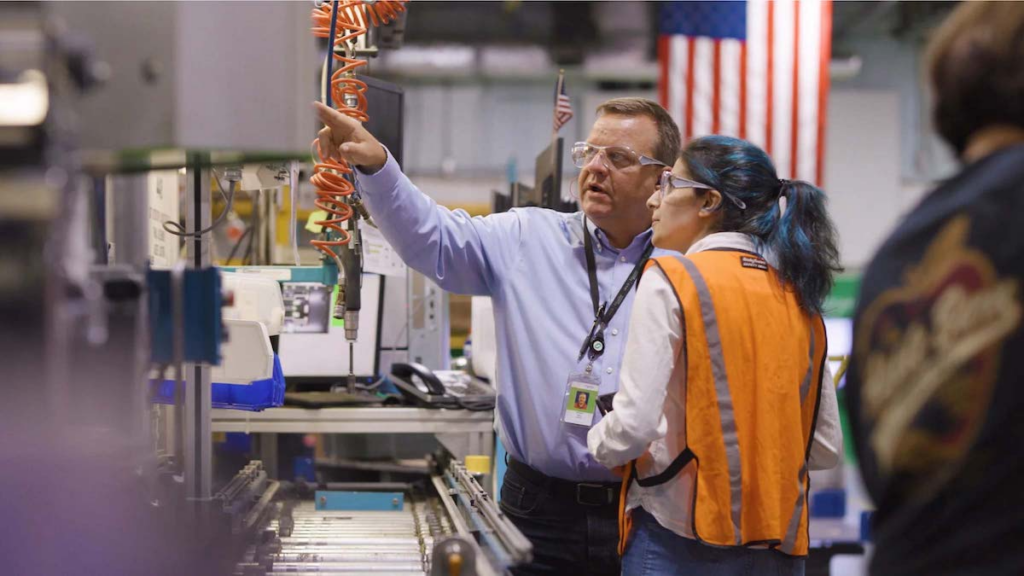[ad_1]

By Aamir Paul
Digital transformation is fundamentally changing the way we do business. We’re seeing more data, quicker processes, and safer and more efficient work across all industries.
But the industrial sector, which can arguably benefit the most from automation and digitalization, is falling behind. Outdated notions of automation, such as the fear of robots replacing hardworking people, hold back progress.
Industrial automation uses control systems, like computers or other information technologies, to handle processes and machinery. These technologies are human-centric. They aren’t about cutting costs by taking jobs; they’re about making those jobs safer and more efficient by reducing the need for people to participate in repetitive or dangerous tasks and letting them focus on higher-value work.
Embracing automation is vital for industrial firms to remain competitive and retain talent, which is why nearly half of all industries have initiated some sort of digital transformation. However, the initial stages of industrial automation projects often present challenges such as deadlines, costs, technical issues, and communication gaps.
Collaborating with expert partners in digital transformation can alleviate these challenges by organizing resources, addressing skills gaps, planning digitalization, and achieving interoperability. Such partnerships may also foster cross-industry dialogue and innovation to meet evolving market demands.
Meeting the Digital Demand
In today’s digital era, industrial companies must use digital technologies and automation to meet evolving customer demands. Now more than ever, companies are expected to produce highly customized products and offer fast delivery windows.
To make its operations more efficient and meet its sustainability goals, Whirlpool Corporation developed and implemented a resource management strategy across 40 global manufacturing sites. By integrating digital infrastructure and introducing strategic consulting with Schneider Electric as their sustainability partner, Whirlpool found new data insights to pinpoint process and resource inefficiencies. After learning it had more than 20 million pounds of cardboard waste at its Ohio plants, the company anticipated savings of more than $1 million over three years through improved resource management.
Data insights like this demonstrate one of the greatest benefits digital automation offers to industrial companies. By making hidden data visible, businesses can reduce waste, save money, and give workers real-time data for quicker, smarter decision-making, empowering them to speed up operations without compromising quality.
Automation can also help resolve some key challenges linked to reshoring and nearshoring initiatives, which have become vital strategies for U.S. industrial businesses seeking sustainable growth and operational resilience. By enhancing operational efficiency, cost efficiency, and production scalability, automation helps make U.S. manufacturers more competitive worldwide.
Industries of the Future
Staying competitive in the industrial sector during the era of rapid digitalization requires skills in data science, AI, cybersecurity, and cloud computing. At the same time, the surge in sustainable practices and renewable energy is attracting an entirely new type of professional to the field—particularly those who are passionate about environmental stewardship and sustainable resource management.
With approximately 600,000 manufacturing jobs currently unfilled in the U.S., the industrial sector is experiencing higher costs, reduced safety, production delays, and quality issues. Industrial automation can play a pivotal role in attracting new talent, as incoming industry professionals are digitally inclined and expect advanced software and equipment from their prospective employers.
However, this concept hasn’t yet gained traction among many current and soon-to-retire workers. In a recent survey of 407 industrial companies around the world, conducted by Omnia and Schneider Electric, 73% of participants said digitalization will substantially change the nature of work in the next three years. However, 49% said they have no or insufficient skills in robotics or programming, and 30% said they have no or insufficient skills in data processing, visualization, and analytics.
Expert partners and advanced technologies can help industrial companies bridge the skills gap between the retiring and incoming workforces by serving as onboarding drivers, enabling employers to identify skills gaps to create customized learning programs. These programs are crucial to giving employees the skills to adapt to evolving job roles and technologies and ensuring employers have a top-notch workforce.
Successful integration of digitalization into facility operations hinges on universal workforce buy-in. While partners can help companies develop a strategy to upskill their workforces, it’s up to business leaders to create a culture that supports automation and innovation through comprehensive training and emphasis on growth opportunities.
The path to widespread industrial automation requires strategic investment and a cultural commitment from business leaders to help employees grasp the value automation brings. Companies that embrace industrial automation as an opportunity rather than a threat can attract new talent with forward-looking jobs, driving economic and social development. By integrating industrial automation, leaders can drive the development of innovative solutions that set new industry standards and meet emerging market needs.
Learn more about how to transform your operations by partnering with Schneider Electric.
[ad_2]
Source link

